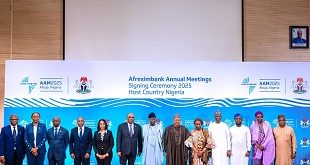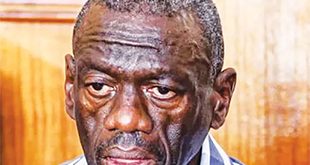
By Joseph Bossa
It would improve matters a bit if land registries desist from issuing multiple titles over one piece of land
Despite numerous government interventions to stop them, evictions from land continue apace all over the country. Armed with guns, some land owners, usually new ones, chase occupants off land, rendering some of them homeless.
However, the landlords have not had a monopoly of the villainy. Seeking to exploit the present chaos, many fraudulent people lay claim on unoccupied land they never held before by presenting all manner of evidence of previous occupancy, some of which bordering on the macabre. Others expand their holdings well beyond what had been agreed on. These see the current chaos as a land bonanza.
In many instances the land owner is left holding nothing but the paper title. Defenceless landlords have been prevented from accessing their land by tenants wielding machetes and sticks.

A simple exercise like a landlord taking a surveyor to open up the boundaries of his land can lead to loss of his life and that of the surveyor at the hands of the tenants who, viewing such act as a prelude to their being evicted, label him a land thief – of his/her own land. Nowhere is this more pronounced than in Buganda and the problem appears to emanate from the land tenure system; especially the mailo land system.
Although this problem appears new to some; its origin is traceable historically to 1897 when Daudi Chwa II was crowned Kabaka of Buganda. The two-year- old king could not have guessed that his powers in the kingdom he was inheriting and its land tenure system were about to be changed for ever in three short years.
Kabaka Chwa or more accurately, his three regents signed the 1900 Agreement between Buganda and the colonial power, Britain. Under the agreement, the Kabaka not only ceased to be the absolute ruler of his kingdom and came to exercise such powers as were left him under the supervision of the Governor, but he also lost overall ownership of its land and become owner of only 350 square miles of its terrain.
The 1900 Agreement parcelled out Buganda land among, (i) the Kabaka, (ii) some notables, (iii) 1000 chiefs of the day in the upper echelons, (iv) Anglican Protestant and Catholic missions, and (v) the colonial administration.
Not directly partaking in this land give away was the Islamic faith as an institution. (The Muslims were the losing party in the Buganda religious wars). Probably it was thought that they were catered for by giving Prince Nuhu Mbogo, the Muslim leader, 24 square miles for ‘himself and his adherents’.
Also left out of this deal were the 2 million ordinary Baganda. In short, the British tried to introduce in Buganda a medieval, feudal system of land ownership, which they knew well, where the land was owned by the landlord who lived off the sweat of the serfs who tilled it.
Up till then all land in Buganda belonged to the Kabaka who parcelled it out to clan heads (bataka) who, in turn, parcelled it out to their clansmen. (Among his many titles, the Kabaka is called Ssabataka [head of bataka]).
A Muganda thus owes his identity, first from his family, then to his clan and through his clan, to the Kabaka. However, the bataka did not feature under the 1900 Agreement. They had to agitate before the land allocations were adjusted to accommodate them.
The Beginning of the Problem
The chiefs did not have their allotted land in one contiguous area. It was more usually the case that it would be scattered over different parts of the country, so long as the different parts added up to the total allocation.
This was so for two reasons. First, the chiefs wanted to have their mailo carved out heavily populated areas for therein lay the greatest economic benefit in form of busulu and envujjo (call it rent) payable by people already found on the land, most often having been there for generations.
The people found on this land automatically became the chief’s tenants (basenze). The more tenants occupied the chief’s land the more rent he would obtain. So, if his ‘mileage’, to use the word in a new sense, did not cover enough populated area, he would look for additional area elsewhere to make up.
Secondly, if the area chosen to map out his ‘mileage’ was interspersed with what was designated as crown land (mailo akenda) comprising of forests and wet lands, again the chief would take only so much as was not so designated and be compensated elsewhere. It is this taking over of populated areas that has come back to haunt Buganda today.
The Nomenclature
The land tenure granted to the chiefs and the notables was what was known as freehold in England, i.e. absolute ownership without time limit. As it was parcelled out in measures of square miles, the word ‘mile’ was Gandanised to ‘mailo’.
Even though over time these square miles were sub-divided into ever smaller pieces, the name ‘mailo’ has been retained to refer to the land derived from these square miles. ‘Kibanja’ (singular) or ‘bibanja’ (in plural) means a piece of land over mailo land the holder of which has no certificate title for it. It is not officially documented.
Before the 1900 Agreement, any personal land holding was called a kibanja. The present day meaning of kibanja came after to differentiate it from titled land. In urban areas it is more commonly referred to as ‘puloti’, (derived from the English word ‘plot’) to infer that it is meant for residential as opposed to agricultural purposes.
‘Musenze’ (single and ‘basenze in plural) is a rent paying kibanja holder/owner or tenant on mailo land, private or official estate, who has no certificate over that holding. He/she may also be referred to as a customary tenant.
The 1900 Buganda Agreement gave rise to the following types of land tenure and land owners: (i) private mailo (for Baganda chiefs and notables, including the Kabaka himself), (ii) freehold (for Anglican Protestant and Catholic missions), (iii) Crown freehold (for the Colonial Government), measuring 9000 square miles [now called ‘mailo akenda’] which reverted to the Buganda Kingdom Government upon Uganda gaining political independence, (iv) official estate (attached to offices i.e. that of Kabaka, the Katikkiro (Prime Minister), Omulamuzi (Chief Justice), Omuwanika (Treasurer), Ab’amasaza (county chiefs) and Abamagombolola (sub-county chiefs), (v) clan mailo (land held by clan heads, after they had agitated, for the benefit of their clansmen, (vi) leases (for those with limited term ownership on any of the above types of land), and (vii) Bibanja (for abasenze i.e. tenants on any of the preceding types of land).
As the concept of ‘trusteeship’ was not well developed in Buganda, clan mailo was registered in the names of the clan heads at the time, for example Kalibbala in case of the nsenene (grasshopper) clan.
The clan land became the personal estate of the head at the time of the allocation of the land to the clan. He was able to pass it to his descendants or sell it outright. His clansmen thus technically became the tenants of their clan head on what was meant to be clan land held on their behalf.
Likewise, official estate was registered in the title name of the estate, say, ‘Ssekibobo’, in the case of land belonging to the saza (county) Kaggwe. A.B. K. Kasozi tells us (see his book The Bitter Bread of Exile) that the titles of Buganda counties were derived from the names of the first occupants or holders of those offices, e.g. Kimbugwe for head of Bululi county.
And the titles of the official estates land were made in those names. It was not unusual for the holder of the office to assume the title name of his office and allow his personal name to fade away. Some crafty chiefs, particularly those who succeeded the ones who had received mailo under the 1900 Agreement, exploited this to sub-divide and transfer part of the official estate to third parties. In some parts of Buganda, therefore, what remains of the official estate is the rump on which the official building stands.
The Evolution Mailo Ownership
By granting freehold land to the ruling group of the day, the British may have intended to create in Buganda, a permanent landed gentry similar to that existing in their home country. It was not to be.
Even the best laid out plans sometimes can go astray. The allocated size of private mailo did not remain unchanged. Intended to establish a small group of people with huge chunks of land owned intact in perpetuity by families, the system started to crumble when it began to bend to local cultural norms of inheritance and patronage.
In short order, mailo land, initially sub-divided to benefit the children or relatives of the original allocatees, was fragmented further and transferred to even persons outside the family circles of the original allocatees in exchange for money, as the economy became more monetised, and other consideration.
Thus, gradually, mailo ownership by allocation and inheritance became mailo ownership by purchase. Today, most of mailo land is probably no longer in the hands of the descendants of those to whom it was allocated originally, or Baganda for that matter, but those who acquired it through purchase.
In order to protect the mailo owners from being dispossessed by the more commercially sophisticated foreigners (read Europeans and Asians) the Protectorate Government passed a land law in 1908 to prohibit the transfer of mailo land from an African to a non-African without the consent of the Governor. The effect of this law was that in Buganda, non-Africans, mostly Asians, could only obtain leaseholds from mailo owners, i.e. ownership of land for a specified period under given conditions.
The Emergence of the Bibanja Issues
The beneficiaries of mailo land allocations who also happened to be serving chiefs could not spare the time to superintend their land holdings scattered in different parts of Buganda. This situation compelled them to appoint agents (basigire) to collect rent from the basenze, approve the sub-division and to allocate new bibanja on the mailo. The sub-division of bibanja was encouraged as it meant an increase in the number of people bound to pay rent for the gain of the mailo owner.
Originally it was contemplated that the bibanja would be sub-divided in favour of family members of the kibanja holder concerned with the consent of the agent. Commercialisation of land gradually led to sales of bibanja to people outside the family of the kibanja owner, sales which were disguised as donations to a family member for the record purposes of the agent.
At the beginning the mailo owners freely charged rent to the basenze until they protested its excess and arbitrariness and threatened rebellion. In1928 it was found necessary to pass the Busulu and Envujjo Law to fix and standardise the rent (busulu) at Shs.3/= per year per kibanja no matter its size. As the economic value of this amount was eroded, in many parts of Buganda, the mailo owner’s zeal to collect it diminished.
The rent was simply not worth the cost and bother of collecting it. The requirement for consent to sub-divide or transfer a kibanja began to be followed more in the breach than observance. The landlord lost enthusiasm in tracking the identities and number of basenze on his land and the size of their holdings.
As the economic value of bibanja rent disappeared for all practical purposes, the value of mailo land with basenze on it began to rest in the eviction of the tenants and the sale of the land ‘as is’ to those better placed to deal with the basenze as the better option. And so the hue and cry about ‘land grabbers’.
The State once again intervened and passed the 1998 Land Law which fixed the rent on bibanja at Shs.1000/= per kibanja regardless of its size, state or location. It also tried to address the issue of those being evicted on the ground that they were unknown to the land owner.
The law deemed and called them bone fide occupants if they had been on the land for the previous twelve years. The mailo owners called them squatters. To give security of tenure to basenze, being duly recognised tenants, and squatters not recognised by the mailo owner, the law introduced Certificates of Occupancy to be issued to tenants, which has not been implemented.
But even this 333% increase in rent did not bring it near commercial value. The evictions continued almost at the same pace as fraudulent people are laying claim to bibanja on unoccupied mailo land they never held before.
Those mailo owners who have tried to follow the legal path by resorting to courts of law to have the illegal tenants evicted have found no profit in doing so. The State has intervened by stopping the evictions of bibanja holders, with or without court orders. It has set up a plethora of land committees, sometimes to reconcile landlords with tenants and sometimes to investigate and report on explosive incidents. The situation has not abated.
But land wrangles have not been confined between landlords and tenants. Multiple land titles over the same land, all issued by the same land offices but only one of which can be genuine, have pitted several holders of titles against each other.
Delayed transfers from deceased owners to their successors, let alone absence of wills, have led to blood-letting among family members. Bibanja holders are not at peace with each other either. They dispute and fight over the easy to change boundaries of their holdings.
Land is not increasing in size and yet the population depending on it for a livelihood is increasing. Most people have also a mind-set that land is the only form of wealth and will do anything to acquire a piece or retain one. Consequently, throughout Buganda issues over mailo land have given rise to unprecedented and increasing suspicion, fear, tears, blood and bitterness.
Way Forward?
As partial solution to the problem, it has been proposed that the government sets up a land fund out of which it would pay mailo land owners willing to sell their interest. This has been done before in case of mailo land in two counties, Buyaga and Bugangaizi.
Originally part of Bunyoro Kingdom, then part of Buganda Kingdom and presently back to Bunyoro, these two counties had a large number of absentee mailo landlords. In the 2000s, the government bought the land of those mailo owners willing to sell. The tenants remained on the land. Depending on how it has worked out in those counties, that scheme could be extended to Buganda.
It would also improve matters a bit if officers in the land registries would be kind enough to desist from issuing multiple titles over one piece of land. In the longer term, pressure on land should be reduced by opening up and increasing economic opportunities off the land.
Dr Joseph Bossa is the vice president of the Uganda Peoples Congress party.
 The Independent Uganda: You get the Truth we Pay the Price
The Independent Uganda: You get the Truth we Pay the Price


